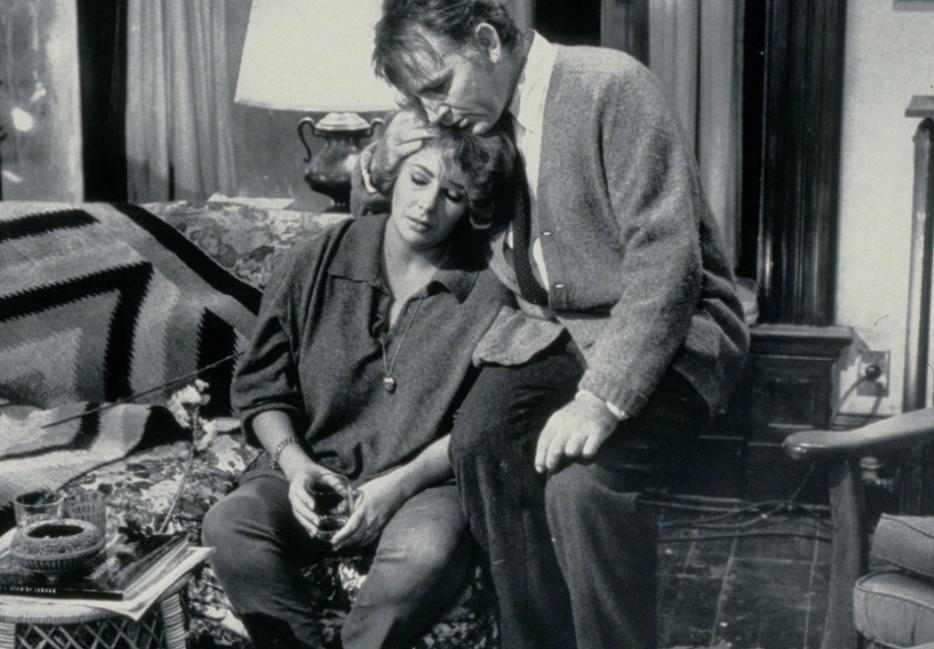In 2006, John Williams’ 1965 novel Stoner was re-released by NYRB Classics. As Tom Hanks told Time magazine in 2010, “It’s simply a novel about a guy who goes to college and becomes a teacher. But it’s one of the most fascinating things you’ve ever come across.” The book’s protagonist, William Stoner, enrolls at the University of Missouri in 1910 because his father wants him to learn about the newest agricultural science; he’s supposed to come back and apply his education to running the farm. Instead, Stoner falls in love with English literature and stays to become a professor.
Generically, Stoner is a campus novel, like Mary McCarthy’s satirical The Groves of Academe or Kingsley Amis’ Lucky Jim. But John Williams isn’t playing the vicissitudes of academic life—the jostling for departmental power, the sex scandals—for laughs. Stoner is a shy, awkward student and a gentle, self-effacing professor, whose only ambition is to be a good teacher. In 1982, David Lodge wrote this about the appeal of campus novels: “academic conflicts are relatively harmless, safely insulated from the real world and its sombre concerns.” What preoccupies Williams is a question that preoccupies anyone who has spent time in the university setting: what is the relationship between the university and “the real world”?
One Friday afternoon while they’re drinking beer together, Dave Masters, Stoner’s friend and fellow graduate student, asks, “Have you gentlemen ever considered the true nature of the University?” The university, he tells them, is an asylum for freaks and geeks like themselves. Stoner, he says, is too sensitive for the world:
You’d let it chew you up and spit you out, and you’d lie there wondering what was wrong. Because you’d always expect the world to be something it wasn’t, something it had no wish to be. The weevil in the cotton, the worm in the beanstalk, the borer in the corn. You couldn’t face them, and you couldn’t fight them...you have no place to go in the world.
For Stoner, and for Lodge, the university is a refuge for eccentrics; it isn’t and shouldn’t be concerned with the larger world. Stoner chooses to apply for exemption from the draft during the First World War, even though other students and instructors (Matthews among them) go off to be killed. Stoner’s devotion to the university is a quasi-religious one: at the dawn of the Second World War, he is still there: “And as in other moments of crisis and despair, he looked again to the cautious faith that was embodied in the institution of the university...he felt a renewal of the old passion for study and learning.”
Since the 1960s, when John Williams wrote this novel, we’ve had a societal crisis of faith in regards to the university. Oddly, unlike the contemporaneous disenchantment with the Church, loss of faith in the university has coincided with greater attendance. After World War Two, university enrollment started going up; in 1980, the Guardian reports, there were 50 million post-secondary students worldwide, and in 2009 there were 170 million. In 2013 more students were enrolled at UK universities than ever before. According to the Association of Universities and Colleges of Canada, this country had 966,400 students enrolled in 2013, which was 15,000 more than in 2012.
Students today who go to university and fall in love with literature—or science, or philosophy, or any pure research—are caught in a double bind: universities don’t necessarily prepare them for the world, nor can they offer the majority a refuge from it. During the Depression, Stoner sees “men, who had once walked erect in their own identities, look at him with envy and hatred for the poor security he enjoyed as a tenured employee of an institution that somehow could not fail.” Stoner is talking about how men who had worked in sectors decimated by the crash of 1929 looked at university employees; this passage could now just as easily be applied to how adjunct instructors look at tenured professors.
John Williams finished his Ph.D at the University of Missouri in 1954, and by 1955 he was an assistant professor at the University of Denver, where he had done his earlier degrees. It sounds so beautifully simple. As Slate’s Rebecca Schuman wrote last April, what was a normal state of affairs for Ph.D graduates in the 1950s and ’60s is now so rare as to be comparable to the chance of surviving small-cell lung cancer: “Well, tenure-track positions in my field have about 150 applicants each. Multiply that 0.6 percent chance of getting any given job by the 10 or so appropriate positions in the entire world, and you have about that same 6 percent chance of ‘success.’”
What preoccupies Williams is a question that preoccupies anyone who has spent time in the university setting: what is the relationship between the university and “the real world”?
According to a 2004 study by the National Center for Education Statistics, adjuncts (people with a Master’s or Ph.D who teach university classes but are not eligible for any benefits, teach semester to semester with no job security, and are not on the tenure track) made up about 44 percent of faculty in the United States. StatsCan doesn’t currently gather statistics on part-time faculty, but the last time they did, in 1997-98, sessional instructors made up 46 percent of all university faculty. In some universities, more than half of all undergraduate courses are being taught by sessional instructors. As recent articles like the New York Times’ profile of adjunct professor Mary-Faith Cerasoli report, the person standing at the front of the class lecturing about Italian literature may be living in her car.
“The world” intrudes on the life of the mind when the body is hungry. According to a 2011 Current Population Survey conducted by the U.S. Census Bureau, between 2007 and 2010 the percentage of people with graduate degrees receiving food stamps or other welfare aid in the U.S. doubled. The Urban Institute calculated that 33,655 people with Ph.Ds were reliant on food stamps in 2010.
The weevil in the cotton, the worm in the beanstalk, the borer in the corn: Dave Masters is to some extent commenting on the inherent injustice in the world, where hard work is no guarantee of survival, and there is no sympathy for the weak. Part of the appeal of the university is that it provides a space where the fragile things beyond daily survival are valued: poetry, art, philosophy, theory of all kinds. It’s what the world isn’t and doesn’t want to be, a place for the quiet voices that ask why things are the way they are.
The crisis that changes everything for Stoner is when a graduate student tries to cheat his way through his oral exams. The student, Charles Walker, is another faculty member’s protégé, and Stoner’s determination to fail him will have far-reaching consequences. The dean is a longtime friend of Stoner’s; they were graduate students together, and Stoner reminds him of what Dave Masters once said:
The three of us, we were together, and he said—something about the University being an asylum, a refuge from the world, for the dispossessed, the crippled. But he didn’t mean Walker. Dave would have thought of Walker as—as the world. And we can’t let him in. For if we do, we become like the world, just as unreal, just as...The only hope we have is to keep him out.
The danger Stoner perceived was of allowing those who didn’t truly value learning to infiltrate university life. Forty years later, the university is no longer a refuge for the dispossessed, but an engine of dispossession. Most scholars, after a long and expensive struggle in pursuit of pure learning, are returned to the world after all.
Update: an earlier version of this article stated that Stoner was republished in 2014. It was actually republished in 2006. The article has been updated to reflect this.





